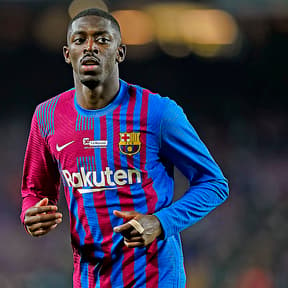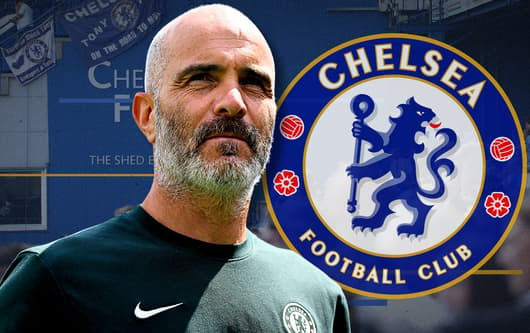Raheem Sterling: Why Chelsea signing will prove a great transfer

Manchester City seem to be at the heart of many of the big transfers so far this summer, and Raheem Sterling’s departure to Chelsea is just one of these.
Sterling left for a reported transfer fee of over €56 million, which is a decent return for a player in the final year of his contract. At Chelsea, he has signed a five-year deal with an option to extend for another season.
From the player’s perspective, it is easy to see why he made the decision to leave. He was offered a bigger role at a side that is at a very similar level, and he gets a salary hike to go with it.
Sterling easily a starter at Chelsea
At Manchester City, the arrival of Haaland and Julian Alvarez made the competition for attacking spots even tougher, whereas at Chelsea, Sterling will easily cement himself as a regular starter.
The question, though, is how his skillset will translate to a different system.
At Manchester City, he was mostly used as a winger in their 4-3-3 system, typically staying close to the touchline before making inside runs to the penalty area. This is clear to see in his heatmap from last season.
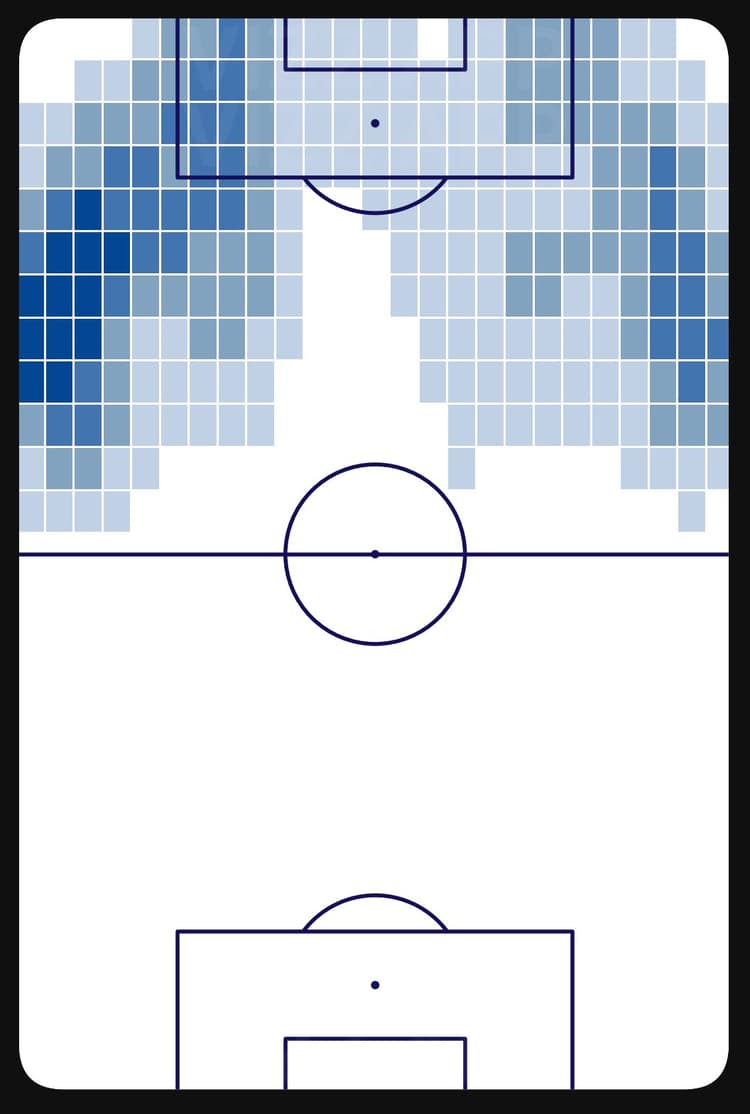
The 27-year-old Englishman’s profile is very unique among wingers. His off-ball movement is superb and he is great at getting into goal-scoring positions while also contributing to his side’s chance creation and ball progression, but one of his main weaknesses is something most of his positional peers excel at: dribbling.
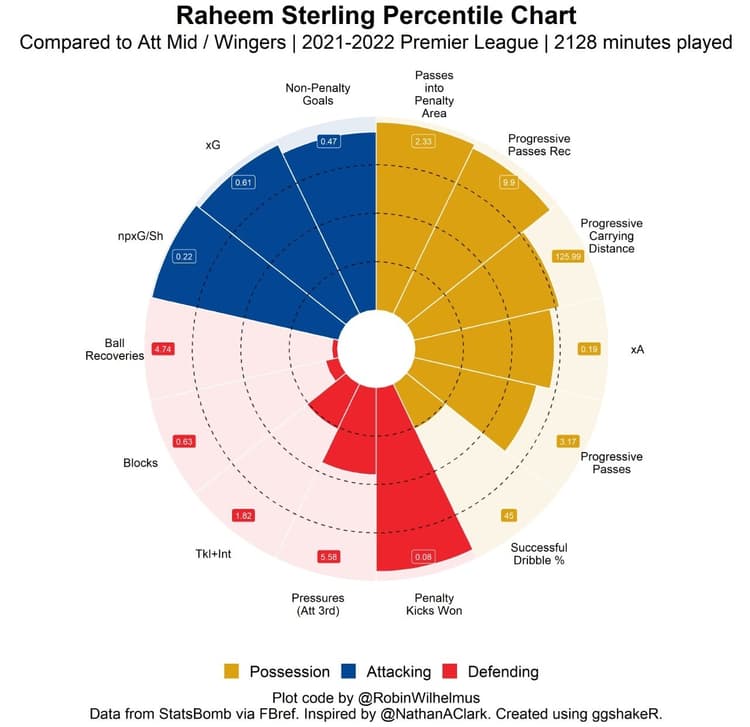
At Manchester City last season, this did prove to be a problem at times because of how he was used as a touchline winger, as is evident in his pass receptions heatmap.

The inability to beat his man after receiving the ball out wide often meant that he either had to pass backwards or risk being dispossessed, which is something that happened over thrice per 90. This issue was slightly magnified by the fact that he spent most of his time on the left wing, where he would have to cut inside because if he went to the byline, he would be unable to deliver threatening crosses with his weaker left foot.
It is important to note, though, that Sterling is an exceptional ball carrier in spite of not being a great dribbler. The key difference is that he is great at driving forward into open space with the ball at his feet, but the trouble begins when someone is designated to stop him from doing so.
When given space, the ex-Liverpool man excels at getting the ball into dangerous areas in and around the box from out wide, as his progressive carries map from the last league season shows.
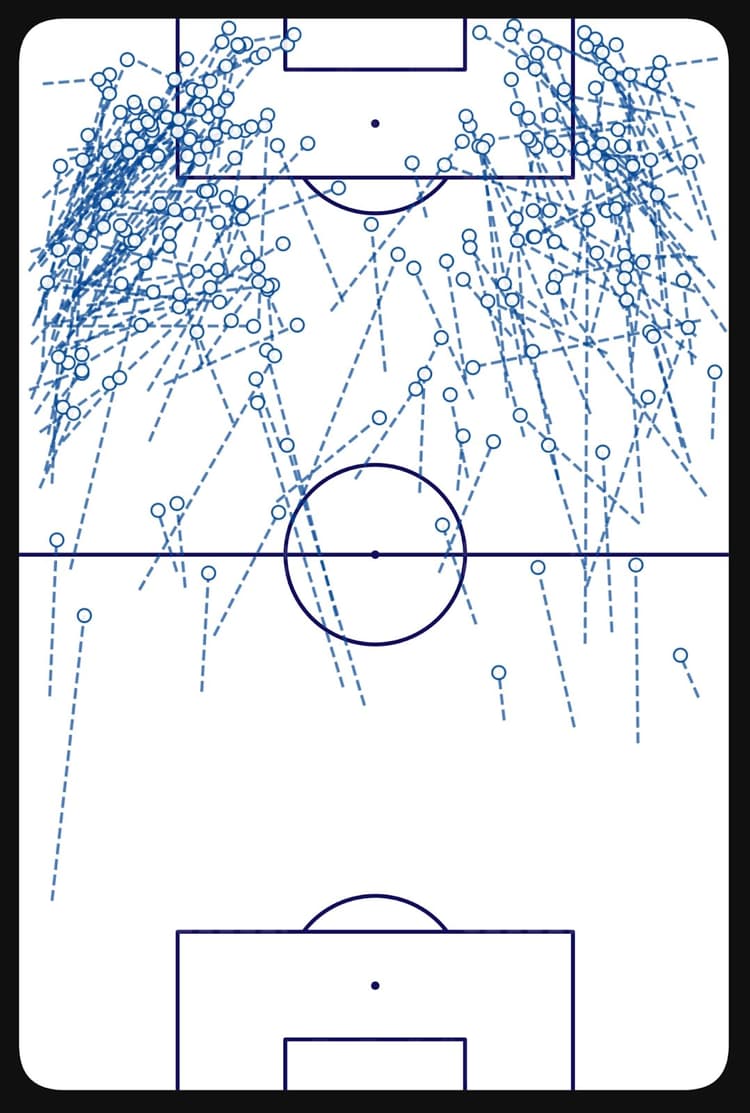
Weakness masked by the system
The good news for Chelsea is that his dribbling weakness will be masked by the system that Thomas Tuchel likes to use. The German manager sets his side up in a 3-4-2-1 shape which does not require natural wingers but instead has inside forwards that work in the half-spaces, while the wing-backs provide width in attack.
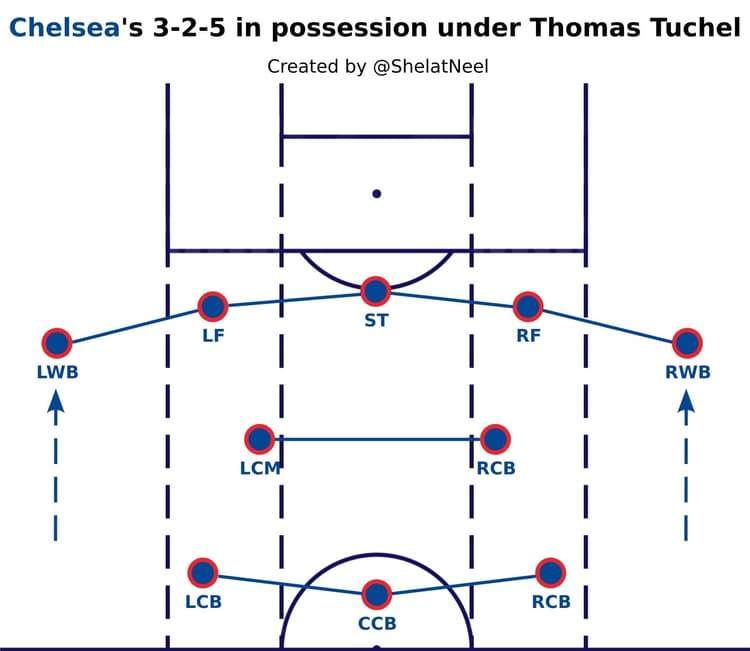
Sterling will likely be used in either of the inside forward positions, so he will rarely receive the ball on the wing as he did at Manchester City. Contrasting his aforementioned pass receptions heatmap to that of Kai Havertz, who was usually used as an inside forward in this system last season, the difference becomes clear.

Havertz received the ball in the half-spaces frequently and hardly ever did so next to the touchline, so dribbling is not really a requirement for him. This is proven by the fact that Sterling attempted well over twice as many dribbles per 90 (4.62) as him (2.08) in the league last season.
One of the reasons why the English international will thrive in the half-space is that his chance creation is already focused in this region, as he specialises in cut-backs.
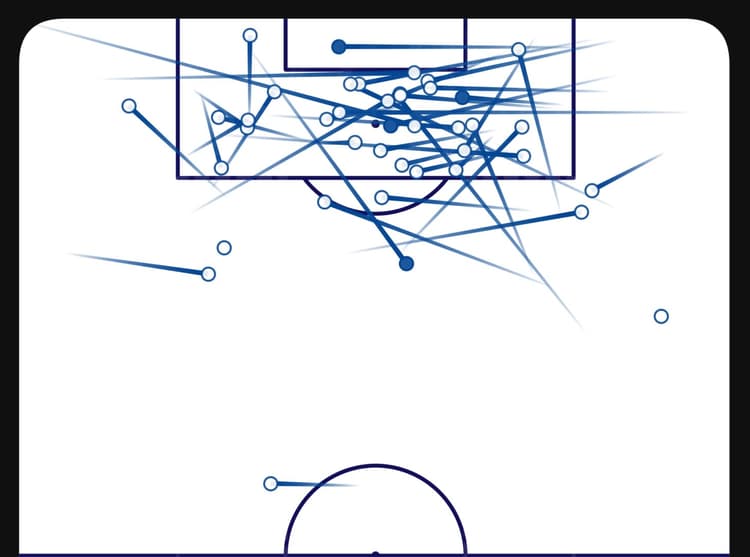
The biggest criticism levelled at Sterling is that his finishing is poor, which is a fair point backed up by data. Since xG data started being collected in the 2014/15 Premier League season, the Englishman has consistently been finishing at a below average rate.
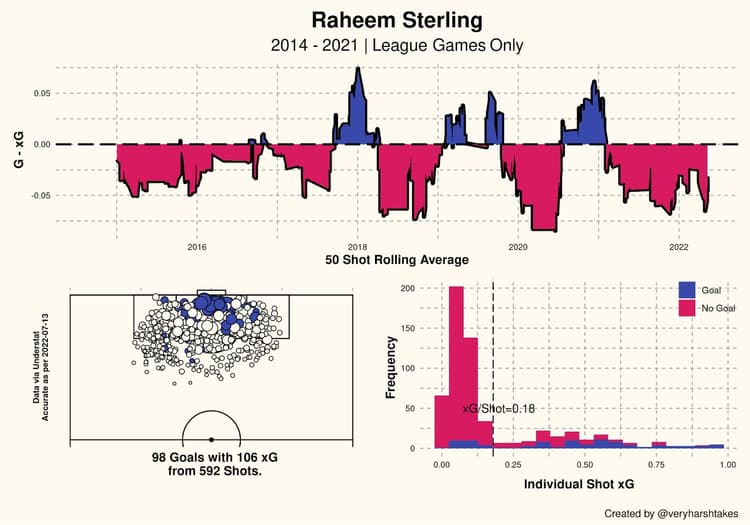
Zooming into his shotmap, his strengths and weaknesses become clear.
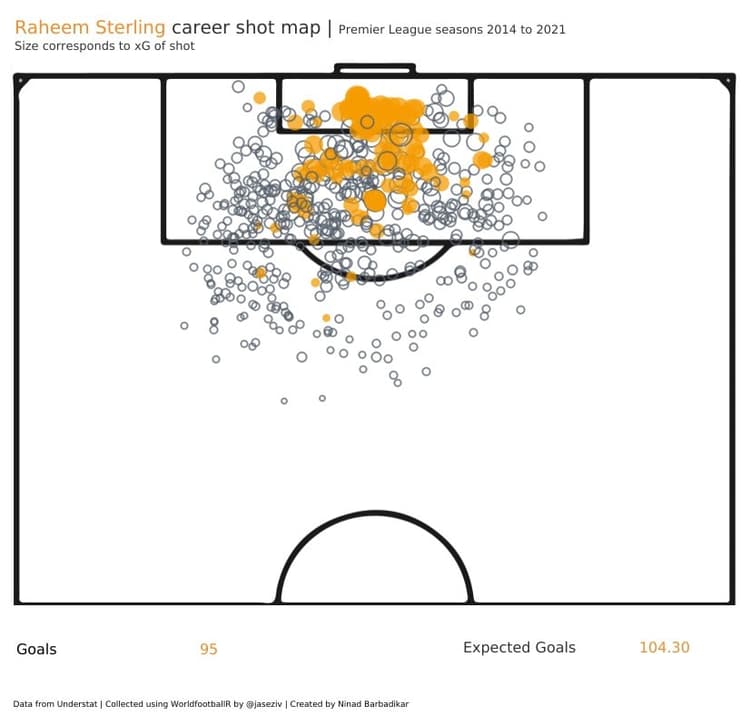
As aforementioned, Sterling’s off-ball movement is elite so he has a knack of getting into great goal-scoring positions in the six-yard box and around the penalty spot regularly, after which all he needs to do is tap the ball home. However, in one-on-one situations or from tighter angles, the 27-year-old often lets himself down.
Between his unorthodox running style, clumsy dribbling and disappointing finishing, it is safe to say that Sterling is not always easy on the eye. However, to his credit, his production has been consistently high. He has hit double-digits in terms of league goals in every season from 2017/18 onwards, and in terms of goal involvements, he has done so in all but one league campaign since turning 18.
A great move for Sterling
It appears that Chelsea’s system can mask some of his weaknesses while highlighting his strengths, so this obviously is a great transfer for him. Should the Blues decide against making any more attacking signings this summer, their front three will most likely see Sterling and Mason Mount operate on either side of Havertz.
Mount will be asked to drop deep to link the midfield to attack, while Sterling and Havertz could form a dynamic partnership which encourages the former to make runs in behind when the German international drops deep or drifts wide.
With all of this in mind, it should be safe to say that Sterling will play a key role for Chelsea this season and quite possibly have a very good season from an individual point of view, but the last time everyone said that about an attacker moving to Stamford Bridge, things did not end well. So, only time can tell if this transfer is going to be a success.

